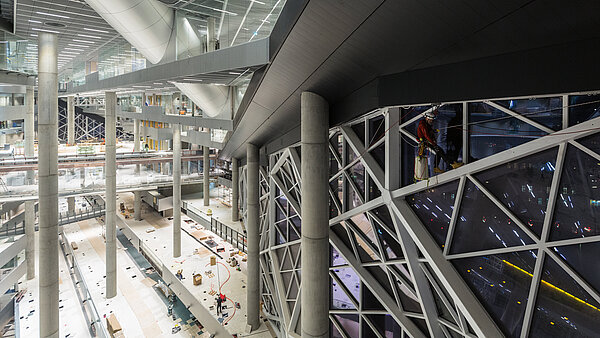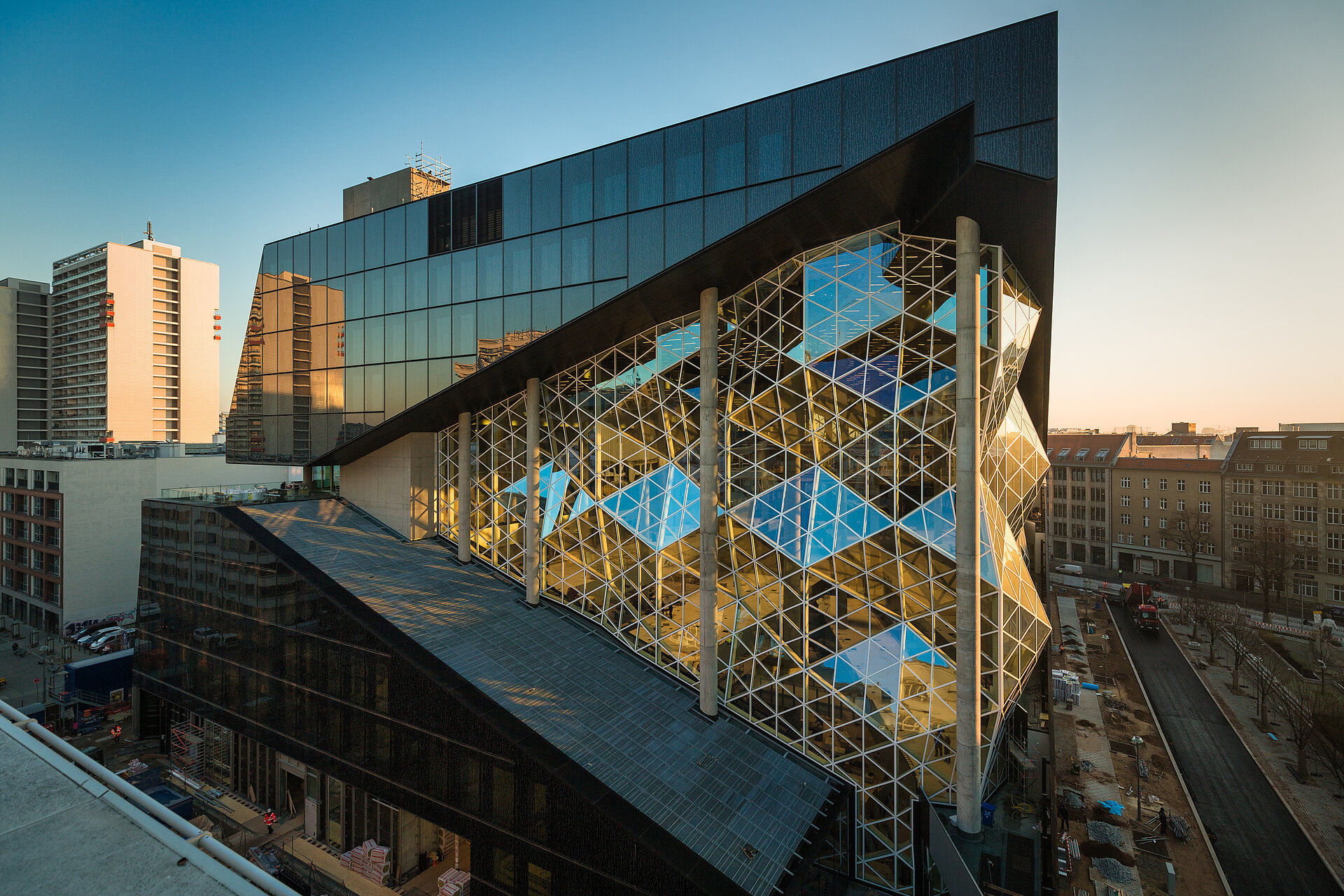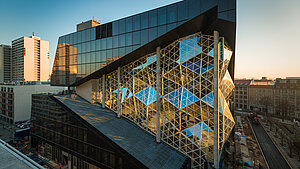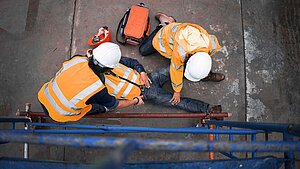Tip 1: As well as aesthetics, consider safety and cost-efficiency.
Planning and implementation of building projects involve several parties: the architect as the designer, the building planner as the implementer, and the customer as the end user. Each person/group prioritises the aesthetics, functionality, and building safety on the basis of their own individual views and requirements. Concealed fall protection systems, including rope access technology, which seem to just vanish within the building structure are not merely desirable, they are feasible. However, factors relevant to safety and cost play an essential role as well. A solution that is aesthetically pleasing as well as practical and convenient is best achieved by involving safety systems experts early on, and by good planning.
Tip 2: Schedule sufficient time to select the appropriate systems.
The safety system to be used for protecting against falls, and the process for rope access technology to be used in practice, depend on a number of factors such as the building structure or the façade type. In selecting the system, a solution must be found which is functional, aesthetic, and safe simultaneously. Sufficient time should be allocated for the decision process. For example, compare the options for refining the appearance of the materials used. If rail systems are to be used, then an effective solution is to anodise them to match the colour of the background, so that the safety systems (almost) become one with the façade.
Tip 3: If you plan in good time, then you can be flexible later.
Retroactive planning and implementation of a fall protection system, with or without rope access technology, usually involves great expenditure of time and cost. What is more, concealed solutions are much harder to implement, as aesthetics is not the sole factor. Building owners also benefit later from timely planning of the appropriate safety system. Façade cleaning/maintenance can be carried out flexibly (at specific points on the façade) and also at short notice.
Tip 4: Also think about protecting access points.
If there is a movement from a standing area within the façade to the exterior, or there is a transfer from a ladder to the façade, this is referred to as an “access”. Depending on the circumstances at the location, this must also be protected. This is possible using EAP-LOCK, for example, or temporary protection.
Tip 5: Under no circumstances should you forgo a fully developed safety concept.
The safety concept devised and implemented must be convenient, practical, easy to understand and sustainable, in order to avoid the illusion of safety. The assistance of experienced safety experts is vital, because they combine the necessary expertise with long years of experience, gathered over the course of many projects.
Tip 6: Now is the time to think about the future, so use flexible systems.
Even concealed fall protection systems must undergo annual inspections, and in the event of damage and/or after a fall from a height they require repair. The trend is clearly moving towards flexible solutions consisting of multiple elements, so that there is no need to replace the entire system in the event of a fall. Rail systems offer this flexibility, as they consist of multiple rails with a length of approx. 3 metres, which can be adapted perfectly to the building shell and also make inclinations possible. Special bending devices even allow the fitters to adapt the components to the façade/building structure, so that their aesthetics, functionality, and safety are retained.
Tip 7: Remember to maintain and check the system regularly.
The legal framework is unequivocal when it comes to the maintenance and inspection of safety systems. This also includes the mandatory annual inspection of the entire system, in order to ensure the proper functioning and state of all components. This inspection is performed by certified fitters, assessors (e.g. TÜV) or other trained experts. Everyone involved can save time and cost by using INNO|doc, a documentation software that is perfectly matched to the job and factors in both the execution of the annual inspection and the documentation obligation.
Summary: Above all, concealed fall protection systems, with or without rope access technology, must be safe
Cooperating early on with a strong partner who specialises in fall protection on façades has a positive effect for the users, because it yields benefits such as reduced cost, flexible planning and long-term safety. Similarly, transparent communication and clear agreements contribute to the best possible outcome, accomplished using either high-quality standard solutions or tailor-made custom solutions. This is because there is almost no area of application for which experienced safety systems experts cannot provide a solution. The more clearly and precisely the system requirements are developed and communicated in the early stages of the planning, the greater the potential for achieving a concealed fall protection system and/or rope access technology. Such systems should simultaneously be aesthetically pleasing, functional, and safe.
Consult our free Checklist for other useful information on rope access technology used on façades and buildings.





















